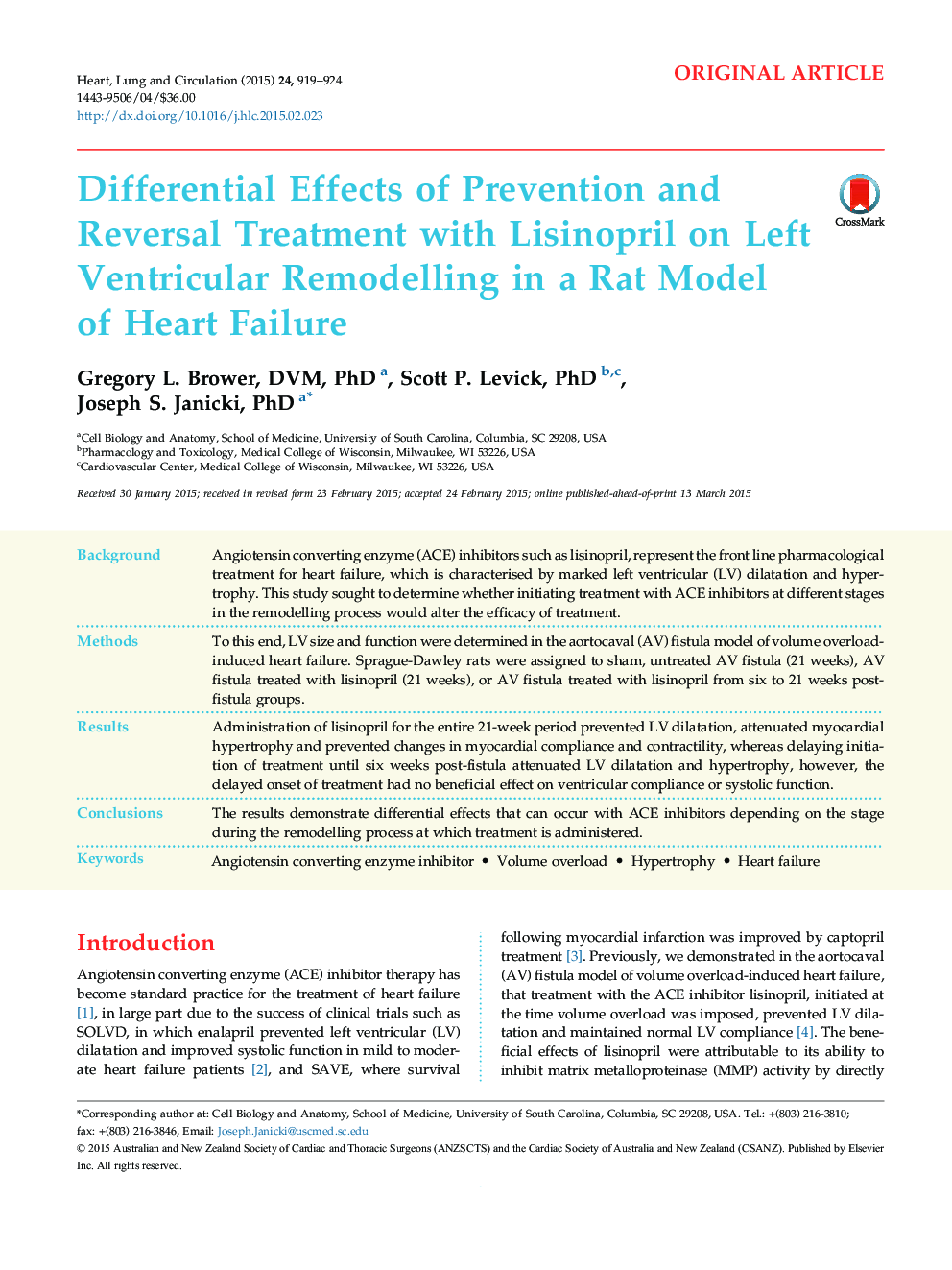| Article ID | Journal | Published Year | Pages | File Type |
|---|---|---|---|---|
| 2917827 | Heart, Lung and Circulation | 2015 | 6 Pages |
BackgroundAngiotensin converting enzyme (ACE) inhibitors such as lisinopril, represent the front line pharmacological treatment for heart failure, which is characterised by marked left ventricular (LV) dilatation and hypertrophy. This study sought to determine whether initiating treatment with ACE inhibitors at different stages in the remodelling process would alter the efficacy of treatment.MethodsTo this end, LV size and function were determined in the aortocaval (AV) fistula model of volume overload-induced heart failure. Sprague-Dawley rats were assigned to sham, untreated AV fistula (21 weeks), AV fistula treated with lisinopril (21 weeks), or AV fistula treated with lisinopril from six to 21 weeks post-fistula groups.ResultsAdministration of lisinopril for the entire 21-week period prevented LV dilatation, attenuated myocardial hypertrophy and prevented changes in myocardial compliance and contractility, whereas delaying initiation of treatment until six weeks post-fistula attenuated LV dilatation and hypertrophy, however, the delayed onset of treatment had no beneficial effect on ventricular compliance or systolic function.ConclusionsThe results demonstrate differential effects that can occur with ACE inhibitors depending on the stage during the remodelling process at which treatment is administered.
